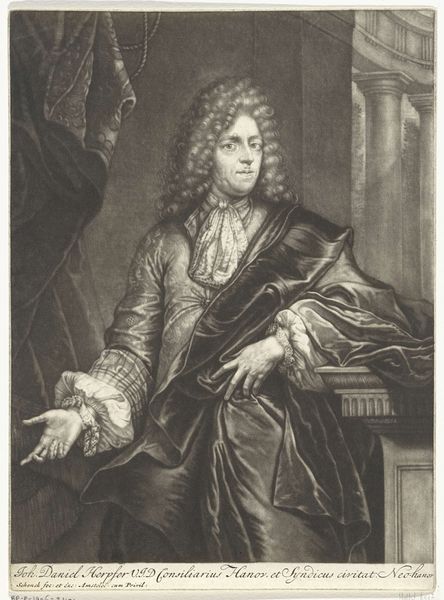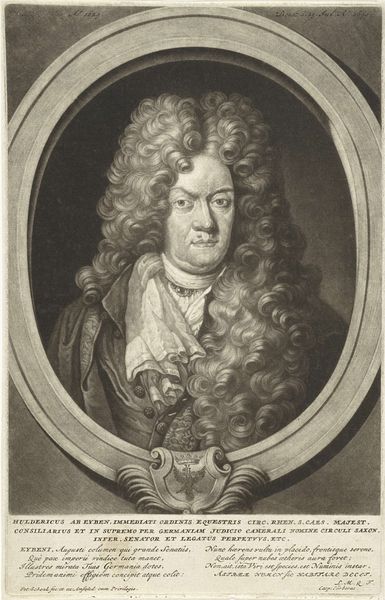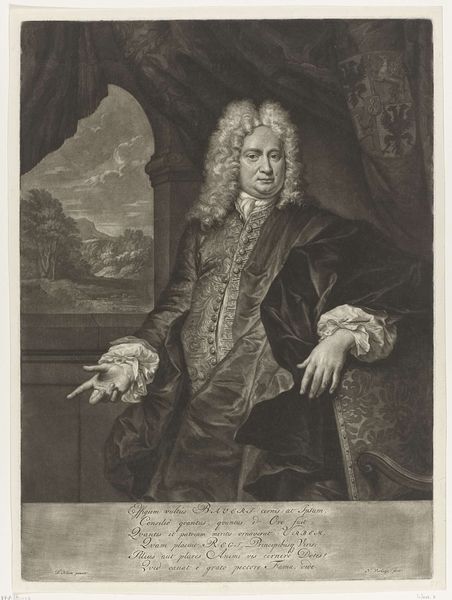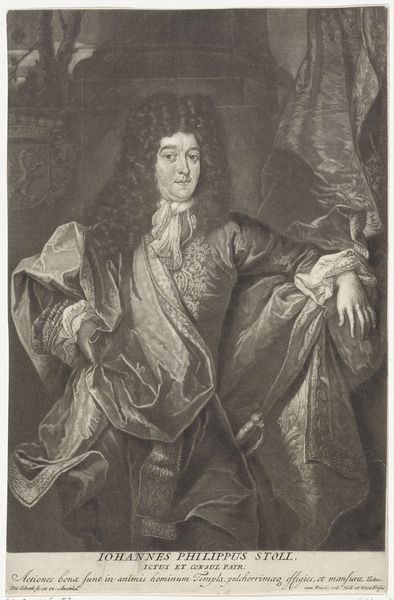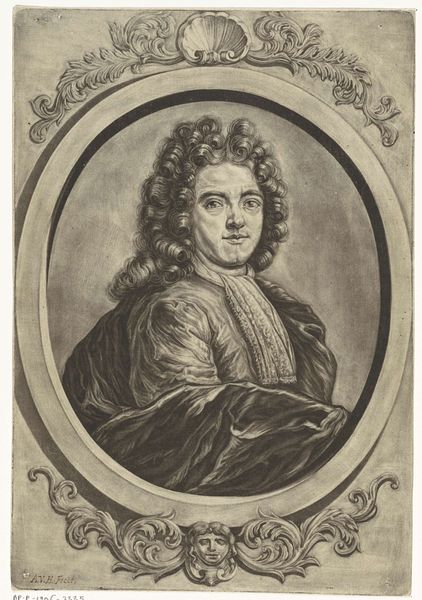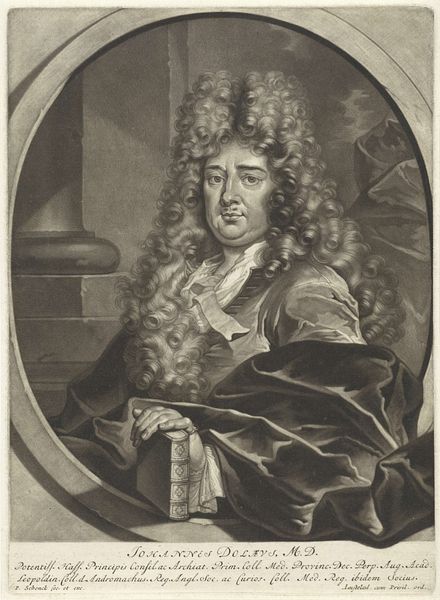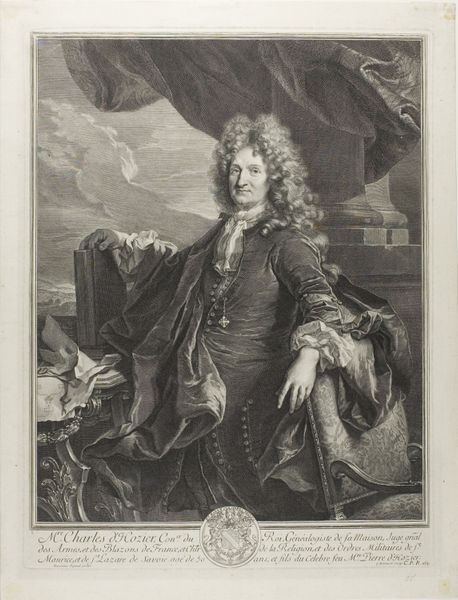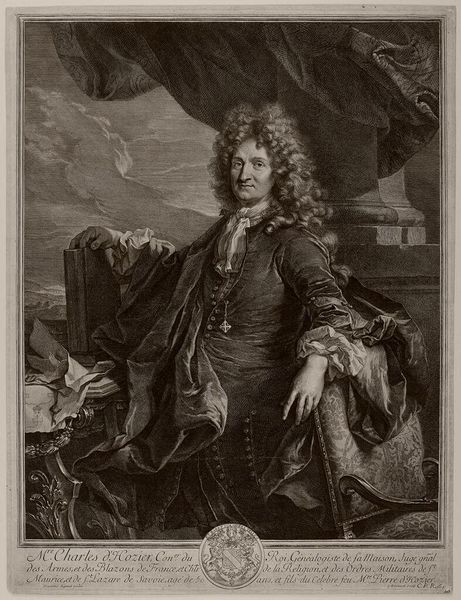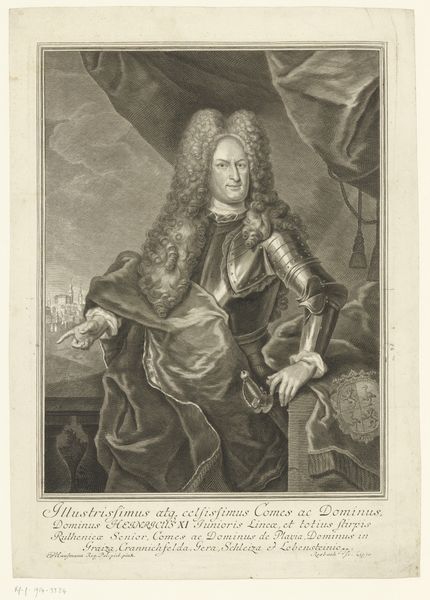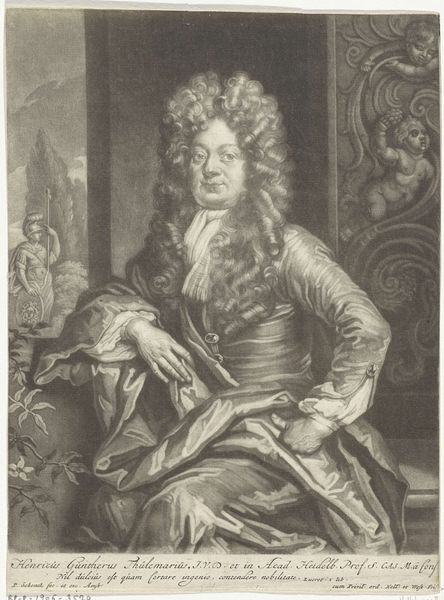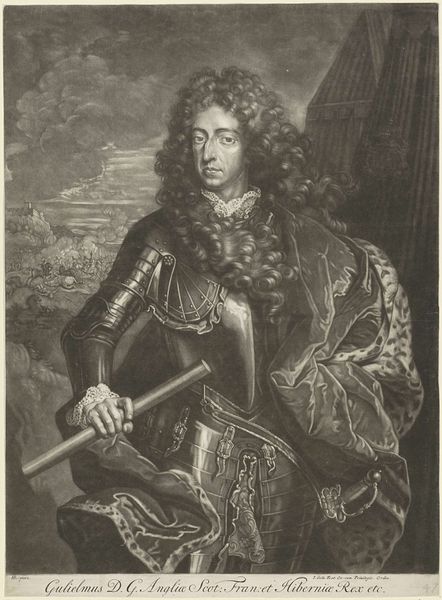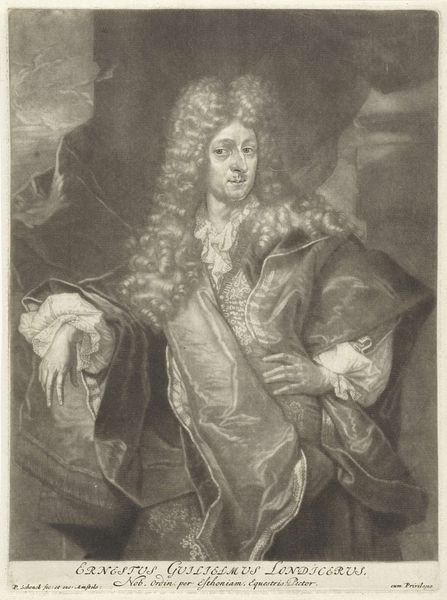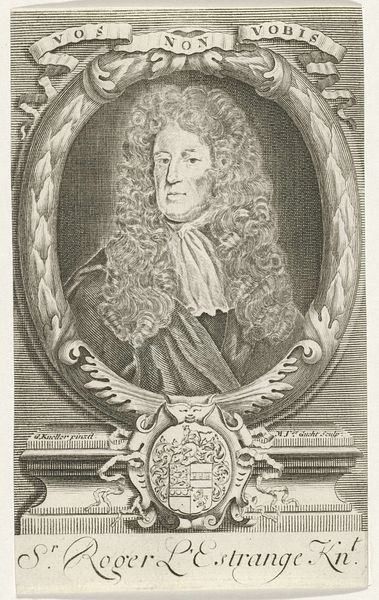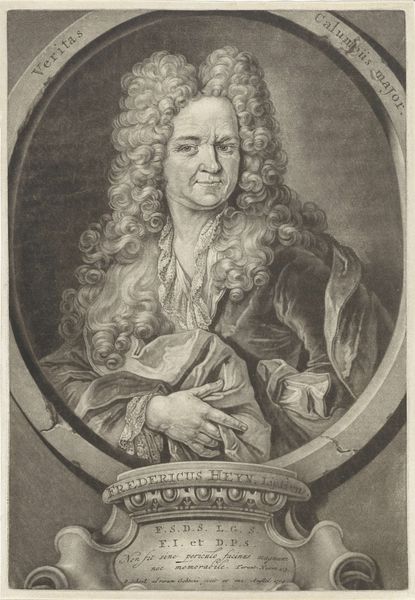
print, engraving
#
portrait
#
baroque
# print
#
history-painting
#
engraving
Dimensions: height 242 mm, width 182 mm
Copyright: Rijks Museum: Open Domain
Curator: Let’s consider this print by Pieter Schenk. Created sometime between 1670 and 1713, the artwork, entitled “Portret van Johann Anton Otto,” currently resides at the Rijksmuseum. Editor: My first impression? Drama, bordering on excess. The swirls of the wig, the heavy drapery…it feels very much a construction of power through visual language. Curator: Indeed. Baroque portraiture often functioned that way, but observe how the details accumulate meaning. The subject is literally cloaked in the visual language of authority: draped fabric is there and a pillar in the background hints at classicism and learning. Note, as well, the book under his hand - a further mark of erudition and power, particularly the knowledge embodied within that text. Editor: It’s an engraving, right? It’s fascinating how Schenk managed to create such depth using just lines and shades. The detail in the lace cuffs alone! It shows great facility with the materials and conventions of the medium. The lines create movement, suggesting folds of fabric and depth within the drapery that surrounds Otto. Curator: And consider Otto’s pose itself. It conveys both confidence and studied casualness, he exudes stability while at rest. He is meant to embody learned sophistication; he carries the symbols of history with grace, even into this modern baroque rendering. These men wanted to be perceived as participants of their history. Editor: So you're suggesting that beyond individual vanity, the painting speaks to a larger cultural impulse for these political images? Curator: Precisely. By associating themselves with the iconography of classical erudition, these portraits make an enduring political claim to the right to leadership, even today. Editor: This portrait certainly embodies its baroque spirit of dynamism and depth; through its textures, tones, and compositional devices, it elevates a personal image into a statement of power. Curator: The enduring fascination with such portraiture perhaps stems from that combination of personal detail interwoven with universal aspirations for a sense of legitimacy.
Comments
No comments
Be the first to comment and join the conversation on the ultimate creative platform.
